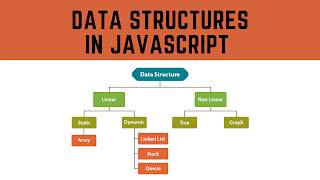Data Structures in JavaScript
Introduction
As business logic moves from the back to the front, expertise in front-end engineering becomes even more important. As for front-end engineers, we rely on viable libraries to be effective. Libraries rely on state libraries such as Redux for data management. Together, Reaction and Redux subscribed to the reactive programming paradigm in which UI updates react to data changes. Fast forward, the backend only serves as the API's server, providing only point-of-use to retrieve and update data. In effect, the frontend engineer expects the frontend engineer to handle all controller logic. The growing popularity of microServices and GraphQL confirms this growing trend.
In addition to having an aesthetic understanding of HTML and CSS, frontend engineers are also expected to master JavaScript. As the client's data stores become "copies" of the database on the server, the intimate knowledge of the idiomatic data structure becomes important. In fact, an engineer's level of experience can be used to gauge when and why a particular data structure should be used. Now, in a
Worried about bad programmer code. Good programmers care about data structures and their relationships.
- Creator of Lens Torvalds, Linux, and Gut.
At the top level, there are basically three types of data structures. Stacks and rows are array-like structures that differ only in that items are inserted and deleted. Attached lists, trees, and graphs are structures that are attached to nodes that refer to other nodes. Hash tables rely on hash functions to save and search for data.
In terms of complexity, stacks and rows are the simplest and can be built from LinkedIn. Trees and graphs are the most complex because they enhance the concept of an attached list. Hash tables need to use these data structures to perform satisfactorily. In terms of performance, LinkedIn lists are best suited for recording and storing data, while hash tables perform best for finding and retrieving data.
To explain why and how this article will be based on the order of dependence.
Let's get started!
Stack
The most important stack with arguments in JavaScript is the call stack where we always act within the scope of a function. Programmatically, it's just a row with two rows of actions: push and pop. Push adds elements to the top of the array, while pop removes them from the space. In other words, the stacks follow the "List In, First Out" protocol (LIFO).
Queue
JavaScript is a program-driven programming language that makes it possible to support blocking operations. Internally, the browser manages only one thread to run the entire JavaScript code, uses the event queue to bring listeners to the queue and the event loop to listen to the registered events. To support Christianity in a single-thread environment (to save CPU resources and enhance the web experience), listeners deserve action and only execute when the call stack is empty.
Promises depend on this event-driven architecture to allow a “synchronous-style” execution of asynchronous code that does not block other operations.
Programmatically, rows are just rows with two basic functions: non-shift and pop. In shift moves the signal to the end of the array, while pop makes them deserving from the beginning of the array. In other words, the queue follows the "first in, first out" protocol (FIFO). If the direction is reversed, we can change the inset and pop with push and shift, respectively.
PLEASE COMMENT TO ABOUT THE BLOG AND SHARE YOUR CODING EXPERIENCES WITH US AT asadsiddique.a@gmail.com



















